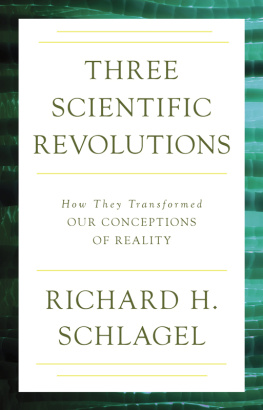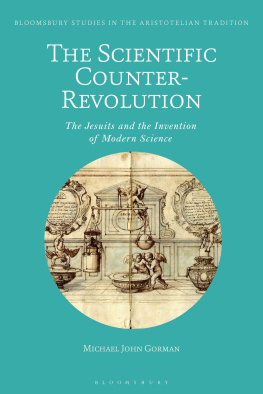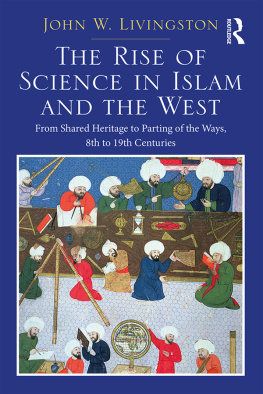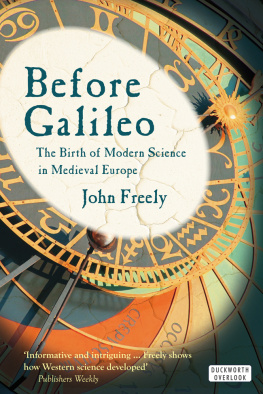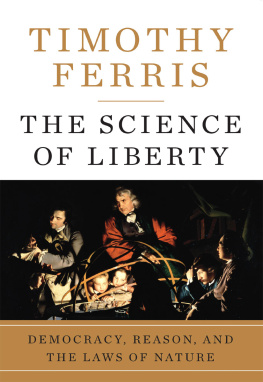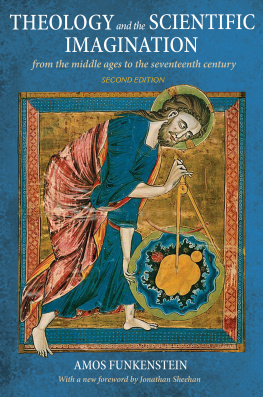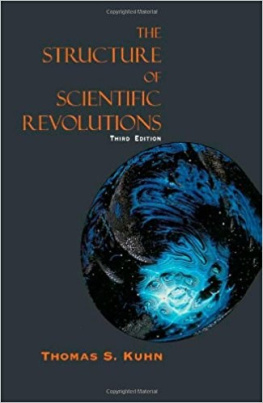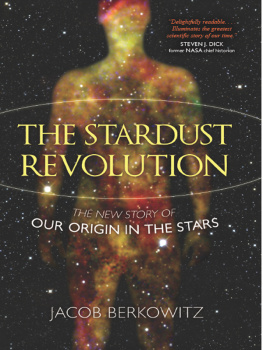
Chapter I
THE FIRST TRANSITION OWING TO THE NATURAL PHILOSOPHIC INQUIRIES DURING THE GREEK HELLENIC AND HELLENISTIC PERIOD
Considering that the United States emerged as the dominant world power after World War II due to its superior armaments, which were based on its advanced scientific and technological developments, and also to its being the freest and most prosperous country after defeating Russia in the Cold War, it is appalling how little most Americans know about and appreciate the reasons for these achievementsthat it was the ancient Greeks who first initiated the scientific method of inquiry that contributed so greatly to Americas ascendance while the conception and adoption of democracy also was first introduced in Athens by Cleisthenes in 508 BCE. According to Robin Lane Fox, an ancient historian, in his The Classical World,
in the spring of 508 BC ... Cleisthenes proposed ... that the [Athenian] constitution should be changed and that, in all things, the sovereign power should rest with the entire adult male citizenry. It was a spectacular moment, the first known proposal of democracy, the lasting example of the Athenians to the world.
though sadly this did not include women and slaves. As Jefferson adds:
In every country, we should be teaching our children the scientific method and the reasons for a Bill of Rights. With it comes a certain decency, humility and community spirit. In the demonhaunted world that we inhabit by virtue of being human, this may be all that stands between us and the enveloping darkness. (p. 434)
In this book I shall describe the three past revolutionary scientific transitions that radically transformed our conceptions of the universe and human existence. I also argue that given the enormity and complexity of the universe the traditional scientific goal of a unified final theory should be replaced by the theoretical framework of contextual realism. Rather than seeking a final theoretical framework to explain all empirical evidence as most scientists of the past intended, we should realize that such inquiries are conducted within successively deeper and expanding conditional but nonetheless real physical contexts of the universe that appear to be endless.
Turning to the first scientific transformation of our conception of reality, while the Egyptians and Mesopotamians had made significant contributions in astronomy, mathematics, biology, and medicine that antedated the scientific inquiries of the ancient Greeks, it is generally conceded that it was the latter who first began a systematic attempt to attain a more empirical-rational understanding of the universe by replacing the previous mythological and theological accounts with empirical observations, logical and mathematical reasoning, and rational explanations.
For instance, it was the Greek Milesians Thales, Anaximander, and Anaximines who, in the sixth century BCE, rejected a divine creator of the universe for naturalistic explanations in terms of Water (Thales), an Unbounded (Anaximander), and an Air-Substrate (Anaximines) and adopted such ordinary explanatory principles as separating off or condensation and evaporation to explain how our current universe came to be from that original state. Though an admirable effort, this attempted unifiedexplanation is now referred to as the Ionian fallacy.
Another extremely gifted person whose influence extended throughout the centuries (string theory in physics is a modern example) was the Ionian philosopher Pythagoras of Samos, also from the sixth century, who was a musician, mathematician, astronomer, mystic, and founder of the Pythagorean philosophical and religious school in Croton. Reputed to be an accomplished lutenist, this facilitated several of his unique mathematical discoveries, the first being that the intervals of musical scales in which the consonances and successive octaves could be expressed in numerical ratios comprising the first four integers. This was followed by his speculation that the motion of the planets emits a musical harmony called the Music of the Spheres, though too remote to be heard by human ears.
Among his other mathematical discoveries were irrational numbers, the Pythagorean theorem, the tetractys (a triangular figure of four rows of numbers that add up to the perfect number ten), and that spatial configurations can be created from arithmogeometric unitse.g., an extended line drawn from two points, plane figures such as triangles and rectangles from several lines, a circle from a joined curved line, and three-dimensional spatial objects such as pyramids cubes, spheres, and complex polyhedra from plane figures. As Aristotle states, based on these inquires the Pythagoreans... construct the whole universe out of numbersonly not numbers consisting of abstract units: they suppose the units to have spatial magnitude.
Thus the Pythagoreans were able to represent the four elements of the physical worldearth, air, fire, and waterby four polyhedra: the earth by the 4-sided pyramid or tetrahedron, air by the 6-sided cube, fire by the 8-sided octahedron, water by the 20-sided icosahedron, and the universe itself by the 12-sided dodecahedron. Because Plato apparently assigned different polyhedra to the four elements, explaining their disintegration and reconfiguration as due to the separation and recombination of their constituent plane figures, they came to be known as the five Platonic solids. Kepler in the early seventeenth century began his astronomical theorizing in his Mysterium Cosmographicum (The Cosmographic Mystery) with the five polyhedra of Pythagoras perhaps as revised by Plato. Other of their astronomical contributions also were extremely important, such as Eudoxus of Cnidus who made the determination of the solar year to be 365 days and five hours, along with originating the long-prevailing view that the celestial bodies revolve on a series of concentric spheres with the earth in the center.
His pupil Callippus of Cyzicus increased his number of spheres to thirty-four to account for certain astronomical irregularities that were adopted by Aristotle. But Philolaus of Croton, in 259 BCE, astutely assigned an oblique circular motion to the earth around a central fire while Heraclides of Pontus and Ecphantos of Syracuse attributed to it an axial rotation from west to east to explain the apparent rising and setting of the sun, along with determining that Mercury and Venus revolve around the sun. This culminated in Aristarchus of Samoss prescient sun-centered astronomical theory in the third century BCE, though eclipsed by Ptolemys geocentrism until Copernicuss adoption of heliocentrism.
However, deriding such empirical explanations Plato, in his famous allegory of the cave, described sensory knowledge as mere reflections of the imperfect material objects in the physical world or Receptacle, declaring that mathematics could free one from these perceptual illusions to ascend to the intelligible world of perfect archetypes, the Realm of Forms, culminating in the Form of the Good and the Demiurge. Apparently the latter was the creator of the real world by imposing the ideal archetypes on the imperfect Receptacle. It was Platos philosophy that was the most influential during the medieval period because of its easy conformity with Christianity, interpreting his Demiurge as God.
Yet it was not Platos philosophy but that of his pupil Aristotle that would prove the most dominant from the thirteenth to the seventeenth century following the syntheses of his philosophy with Christianity by Thomas Aquinas. Rejecting Platos methodology that relied on mathematics for attaining knowledge of the Forms because Aristotle thought it only applied to abstract magnitudes, not to the empirical world, he created the formalism of logic for deducing specific physical properties from empirical premises stating their
Next page
